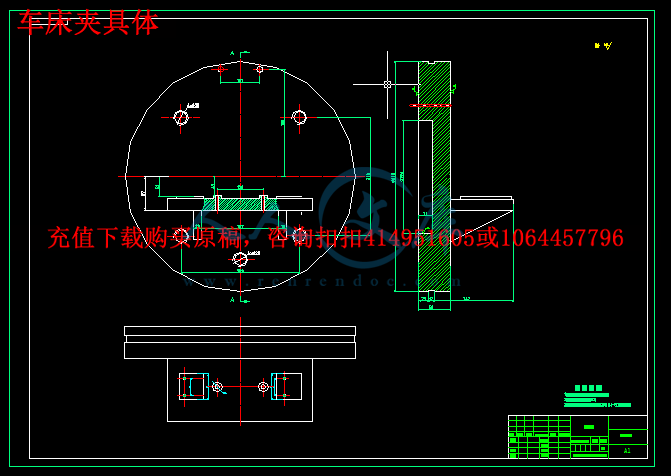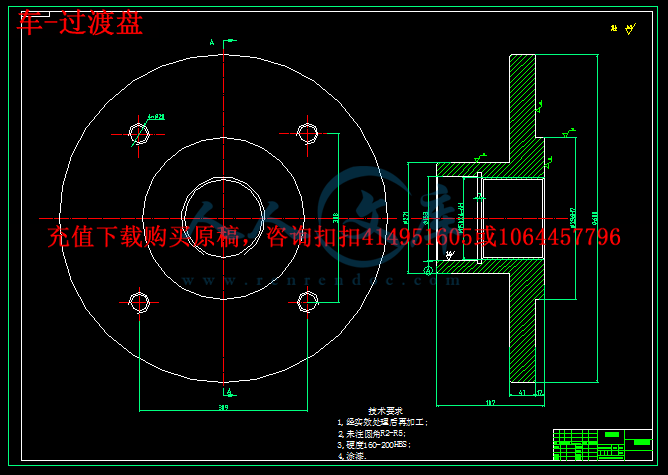摘 要
油缸座的加工工艺及夹具的设计,其中包括零件加工的工艺设计,工序的设计,以及专用夹具的设计一共三部分。众所皆知,我们在工艺设计中要必须首先去对零件进行仔细的分析,了解它的工艺,然后再设计出毛坯的结构,同时选择好零件的加工基准并设计出零件的工艺路线,接下来,我们要对零件的各个工步工序进行尺寸计算,主要是决定出每个工序的工艺装备和它的切削用量,再接着进行专用夹具的设计,对夹具的各个组成部件进行设计,比如定位元件,夹紧元件,引导元件,夹具体,机床的连接部件和其它的部件,同时我们要计算好夹具定位时产生的误差以及分析好夹具结构的好与坏,在以后的设计中要改进。
关键词为:切削用量,误差,工艺,夹紧,工序,定位,
Abstract
Shell parts processing technology and design of drilling jig design process design, including the parts processing process design and fixture three. In the process of design should first carries on the analysis to the components and parts of the process to understand the design of blank structure, and choose the good components the processing datum, designs the process routes of the parts; then the parts of each step of process dimension calculation, is the key to decide the craft equipment and the cutting dosage of each working procedure; design then the special jig, fixture for the various components of the design, such as the connecting part positioning device, clamping device, guide device, clamp and the machine tool and other components; the positioning error calculate fixture positioning, analysis of the rationality and deficiency of fixture structure, pay close attention to the improvement and design in later.
Keywords: process, process, cutting, clamping, positioning error
目 录
摘 要II
AbstractIII
目 录IV
第1章 绪 论1
1.1 油缸座的加工工艺简述:1
1.2油缸座的加工工艺的流程:1
1.3油缸座夹具简述2
1.4机床夹具的功能2
1.5机械工艺夹具的发展趋势2
1.5.1机床夹具的现状2
1.5.2现代机床夹具的发展方向2
第2章 零件的分析4
2.1零件的形状4
2.2零件的工艺分析5
第3章 工艺规程的设计6
3.1 确定毛坯的制造形式6
3.2 基面的选择6
3.3 制定工艺路线6
3.3.1 工艺路线方案一7
3.3.2 工艺路线方案二7
3.3.3 工艺方案的比较与分析8
3.4 选择加工设备和工艺装备9
3.4.1 机床选用9
3.4.2 选择刀具9
3.4.3 选择量具9
3.5 加工之中工序尺寸,加工余量以及毛坯尺寸的选定9
3.6确定切削用量及基本工时11
第4章 车φ83.5 端面夹具设计20
4.1 车床夹具设计要求说明20
4.2车床夹具的设计要点20
4.3 定位机构22
4.4夹紧机构22
4.5零件的车床夹具的加工误差分析24
4.6定位销选用25
4.7 确定夹具体结构尺寸和总体结构25
4.8 零件的车床专用夹具简单使用说明26
第5章 钻Φ3斜孔夹具设计27
5.1 夹具的夹紧装置和定位装置27
5.2 对夹具的导向28
5.3 切削力及夹紧力的计算29
5.4 钻孔与工件之间的切屑间隙31
5.5 钻模板31
5.6定位误差的分析32
5.7 钻套、衬套、钻模板设计与选用33
5.8 确定夹具体结构和总体结构34
5.9 夹具设计及操作的简要说明35
结 论36
参考文献37
致 谢39
第1章 绪 论
1.1 油缸座的加工工艺简述:
油缸座加工处理是指改变形状,尺寸,相对位置等全过程的性质的加工坯料的方法,该方法是基于所述工作者的处理。举个例子:一个处理流程的粗加工 - 精加工 - 装配 - 检验 - 包装的这个具体流程,是属于一般加工方法的过程,但个别的话是不一样的,比如原油处理,它可以包括空白的制造,研磨,也可被分成精加工,然后钳工,以及铣床等,必要的对每个步骤进行详细的数据分析,比如粗糙度之类的。
但是,这其中的差别是要看产品和技术人员,设备条件和工人的质量等等的数量再确定的,来确定在所使用的过程中,以及写在过程的文件中,这是所讲述处理的规划的内容。相对来说是比较有针对性的,所以每个工厂很大可能是不一样的,因为实际的情况很大可能也是很不同的。
总的来说,这一个过程就是一个程序,这个过程是对每一个步骤的详细参数进行表示,而它的工艺规划则是基于一个特定工厂编写过程的实际情况来决定的。













 川公网安备: 51019002004831号
川公网安备: 51019002004831号